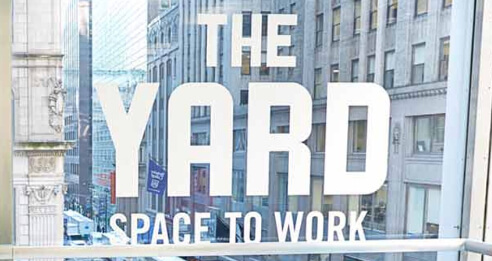
Largest Coworking Companies


Making the most of workspace means using available space smartly to make work more efficient, suit different ways of working, and encourage collaboration. In coworking, it's not just about assigning desks; it involves carefully planning, analyzing how the space is used, and using adaptable strategies to make a shared workspace a lively place for professionals.
Efficient use of space is really important in coworking. As operators try to make spaces that meet the changing needs of different members, optimizing workspace usage becomes crucial. It directly affects how much it costs to run the space, how happy the members are, and how competitive the coworking space is in a busy market.
Figuring out the details of workspace optimization needs a careful approach. In this article, we'll give a short overview of some important strategies for coworking operators. These strategies include using data for decisions, creating flexible seating plans, and using advanced technologies. The goal is to help coworking spaces adjust, do well, and stand out in a constantly changing industry.
In the quest to optimize your coworking space, a crucial starting point is comprehending the intricate dynamics of workspace usage. This section delves into key strategies designed to enhance user experience and space efficiency.
In today's digital age, data is super important. Use tools that give you information about how your space is used. Look at which areas people visit the most, where they like to work, and how often they use different parts of the space. This data helps you see how members interact with your space in numbers.
Most coworking software can show you details like:
Discover the popular spots where people gather and the hidden corners that aren't used much. Once you know these, you can plan the layout better. Make sure every part of your coworking space serves a purpose.

Figure out when your coworking space is busiest. It could be in the morning, during the day, or even late at night. Understanding these patterns helps you manage resources better and plan schedules. This way, your space is ready to be super efficient when it's busiest.
The strategic integration of tracking systems and analytics tools empowers coworking spaces to harness valuable insights, optimizing both the physical environment and the member experience.
In the era of digital advancement, the implementation of cutting-edge tracking systems and analytics tools is not just advantageous; it's a necessity.
These advanced technologies, ranging from real-time occupancy sensors to cloud-based analytics platforms, provide a robust foundation for intelligent decision-making.
By monitoring data on space utilization, traffic flow, and member preferences in real-time, coworking space operators gain a nuanced understanding of their dynamic ecosystem.
However, the power of data lies not just in its collection but in the insights it yields. This section is a deep dive into the art of interpretation—showcasing how to extract meaningful conclusions from usage data.
Understanding peak hours, identifying popular amenities, and deciphering member behavior become the keystones for optimizing layouts, adjusting staffing levels, and tailoring offerings to meet the ever-evolving needs of the community.
Drawing inspiration from real-world success stories, this section goes beyond theory, presenting case studies that highlight the transformative impact of data-driven decision-making. These stories provide tangible examples of how coworking spaces, through savvy analytics utilization, have enhanced both member experiences and operational efficiency.
The goal is to offer readers practical insights and replicable strategies for their own coworking spaces.
Unlocking the full potential of your coworking space involves embracing data-driven decision-making strategies comprehensively. From the initial implementation of cutting-edge technology to the nuanced interpretation and real-world application of insights, this section serves as a comprehensive guide.
It explores topics such as Real-Time Insights with Smart Sensors and Technology, Personalizing Coworking Experiences through Data Insights, Reducing Overcrowding and Enhancing Comfort, and Operational Efficiency and Cost Savings.
In this transformative landscape, data becomes not just a tool but a guiding force propelling coworking spaces into a future of unparalleled adaptability and success.
In the quest for maximizing the utility of coworking spaces, adopting flexible seating arrangements has emerged as a transformative strategy. This section delves into the advantages of such setups, explores the implementation of hot-desking and agile workspaces, and discusses the delicate art of balancing open collaborative spaces with private work areas.

Hot-desking and agile workspaces represent the forefront of flexible seating trends, providing an optimal blend of efficiency and collaboration.
By strategically implementing flexible seating arrangements, coworking spaces can optimize their efficiency, enhance member satisfaction, and attract businesses seeking adaptable work environments.
Efficient resource allocation is at the core of a well-optimized coworking space. By implementing streamlined booking systems and utilizing advanced resource management tools, you can enhance member experience and maximize space utilization. Empower your members with user-friendly booking platforms, ensuring seamless access to meeting rooms, shared amenities, and collaborative spaces.
In this section, we explore the common obstacles faced when implementing workspace optimization strategies and provide insightful solutions and mitigation strategies to ensure a smooth transition.
As operators seek to create environments that cater to the diverse needs of an ever-evolving workforce, the thoughtful design, utilization analysis, and adaptive strategies become instrumental in shaping coworking spaces into thriving hubs for professionals.
Efficient space utilization directly influences operational costs, member satisfaction, and overall competitiveness in a crowded market. By recognizing this, operators must navigate the intricacies of workspace optimization with a nuanced approach. From understanding workspace dynamics to leveraging data-driven decision-making, implementing flexible seating arrangements, and integrating the right technology, the strategies discussed here aim to empower coworking spaces to adapt, thrive, and stand out in an industry that continues to evolve.
Save your community manager 41 hours each week—learn how The Yard did it with cloud-based access control.
Read the Case StudyFree access to our best guides, industry insights and more.
